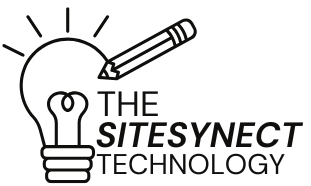Using AI to Automate Customer Feedback Collection
Discover how AI-powered tools automate customer feedback collection, analyze sentiments, and drive actionable insights to boost retention and growth in 2024.

Introduction
Customer feedback is the compass that guides business growth—but manually collecting and analyzing it is slow, biased, and often incomplete. Enter AI-driven automation: a game-changer for gathering real-time feedback, decoding customer emotions, and turning raw data into growth strategies. In 2024, businesses leveraging AI for feedback are seeing faster decisions, happier customers, and 30% higher retention rates. Here’s how to harness its power.
How AI Transforms Feedback Collection
AI automates every step of the feedback loop, from surveys to sentiment analysis:
-
Automated Data Aggregation
-
Scrape reviews, social comments, and support chats from multiple channels (e.g., Google Reviews, Twitter, Zendesk).
-
Tools like Qualtrics or SurveyMonkey Genius AI auto-generate surveys and distribute them via email, SMS, or chatbots.
-
-
Real-Time Sentiment Analysis
-
NLP (Natural Language Processing) detects emotions (anger, joy, frustration) in open-ended responses.
-
Example: An e-commerce brand uses MonkeyLearn to flag negative reviews for instant follow-up.
-
-
Predictive Analytics
-
AI identifies trends (e.g., rising complaints about shipping delays) and predicts churn risks.
-
Top Benefits of AI-Powered Feedback Automation
-
Higher Response Rates
-
Personalized, conversational AI chatbots (like Drift) boost survey completion by 40% vs. static forms.
-
-
Unbiased Insights
-
AI removes human error in data interpretation.
-
-
24/7 Feedback Loops
-
Collect global input across time zones without manual effort.
-
-
Cost Savings
-
Reduce labor costs by automating analysis and reporting.
-
2024’s Trending AI Feedback Tools
-
Zoho CRM + Zia AI
-
Auto-tag feedback themes (e.g., “pricing” or “usability”) and assign tasks to teams.
-
-
Medallia
-
Use generative AI to summarize thousands of reviews into actionable bullet points.
-
-
ChatGPT Integrated Surveys
-
Tools like Typeform embed AI to refine survey questions based on user responses in real time.
-
-
Clarabridge
-
Track customer emotions across 50+ languages and generate heatmaps for urgent issues.
-
How to Implement AI-Driven Feedback
Step 1: Audit Current Feedback Channels
-
List all sources (email, social media, app reviews, etc.) and identify gaps.
Step 2: Choose the Right Tool
-
Startups: Hotjar AI (heatmaps + feedback widgets).
-
Enterprises: Salesforce Service Cloud (end-to-end automation).
Step 3: Set Up Automation Rules
-
Example workflow:
-
Negative review detected → Trigger apology email + offer discount.
-
Positive review → Auto-post to social media with a thank-you message.
-
Step 4: Train Teams to Act on Insights
-
Share AI-generated reports with product, marketing, and support teams.
Step 5: Measure ROI
-
Track metrics like NPS (Net Promoter Score), resolution time, and repeat purchases.
Case Study: AI in Action
A SaaS company used AskNicely to automate post-support surveys. AI analyzed responses and flagged 120+ “at-risk” customers monthly. Their retention team intervened, reducing churn by 22% in 6 months.
Pitfalls to Avoid
-
Over-Automation: Keep human oversight for nuanced feedback (e.g., sarcasm).
-
Ignoring Privacy: Ensure GDPR/CCPA compliance when collecting data.
-
Analysis Paralysis: Focus on 2–3 key metrics, not every data point.
Conclusion
AI-powered feedback automation isn’t just about efficiency—it’s about building a customer-centric culture. By listening at scale, acting faster, and predicting needs, businesses can turn feedback into a competitive edge. Ready to upgrade your strategy? Start with a free trial of tools like HubSpot’s Service Hub or Retently and watch loyalty soar.
What's Your Reaction?
 Like
0
Like
0
 Dislike
0
Dislike
0
 Love
0
Love
0
 Funny
0
Funny
0
 Angry
0
Angry
0
 Sad
0
Sad
0
 Wow
0
Wow
0






































